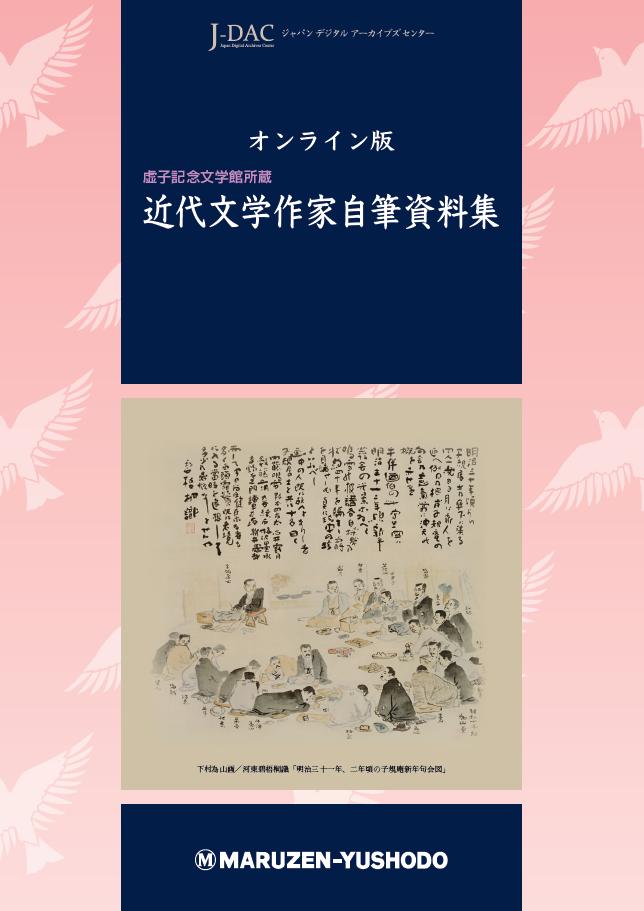
オンライン版 近代文学作家自筆資料集
Collection of Handwritten Materials by Japanese Modern Literary Writers
Original materials possessed by Kyoshi Memorial Museum
Publication year:
ISBN(ISSN):
Text: Japanese
Price: JPY300,000
* Complete purchase type (no platform usage fee or annual maintenance fee is required after purchase)
Catalogue (pdf)
Contents
This database allows you to browse the handwritten materials of the modern literary writers possessed in Kyoshi Memorial Museum.
Kyoshi is a person who had a great influence on the modern Japanese literature as the presiding officer of the literary magazine "Hototogisu". The Kyoshi Memorial Museum, located in Hyogo prefecture, is a literary museum that collects materials related to the poet Kyoshi Takahama (1874-1959). The museum also possesses a thousand of other extremely valuable materials related to the history of Japanese literature.
This database contains about 480 handwritten materials by more than 60 writers who have led the modern Japanese literature, such as Kyoshi Takahama, Soseki Natsume, Ogai Mori, Ryunosuke Akutagawa, Shiki Masaoka, Haruo Sato, and Takashi Nagatsuka.
This database contains the handwritten manuscripts by Kyoshi Takahama, Sachio Ito, Mimei Ogawa, Miekichi Suzuki, Toyotaka Komiya, and Yoshishige Abe, all of which were published in "Hototogisu" magazine. And it also includes the final chapter of Soseki Natsume's "I Am a Cat".
The recorded letters contained here are those written by Soseki Natsume, Shiki Masaoka, Ryunosuke Akutagawa, Koda Rohan, and Haruo Sato, as well as the letters by Ogai Mori that was newly discovered in 2018.
In addition, Shiki Masaoka's "Gyoga Manroku" and "Byosho Shuki" are also fully and beautifully recorded as if you were picking up the original manuscripts in full color with Shiki's drawings and sentences.
In addition, postcards by Asai Chu and illustrations by Western-style painter Nakamura Fusetsu and Okamoto Gesson who supported "Hototogisu" are also contained. It will be an indispensable collection of materials not only in the field of the modern Japanese literature but also the modern Japanese art and publishing culture.
It is a valuable historical material that allows you to see the lively Japanese literary scene in 1880 to 1890.
